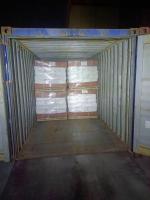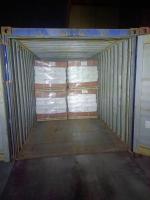Our Products
Polyacrylamide / The equivalent of Cyfloc HX-2000 used for alumina red mud setting

The equivalent of Cyfloc HX-2000 used for alumina red mud setting
Anionic polyacrylamide (APAM) is a water-soluble polymer widely used for a variety of applications, especially in industries requiring efficient flocculation, coagulation, and water management. One of its notable uses is in the processing of alumina red mud, a by-product of the Bayer process for extracting alumina from bauxite ore. The aluminum industry generates vast amounts of red mud, which is typically challenging to dispose of due to its high alkalinity, large volume, and chemical composition. APAM plays a critical role in addressing these challenges by improving red mud settlement and dewatering, making it more manageable for disposal, storage, and potential reprocessing.
1. Understanding Red Mud: Composition and Challenges
Red mud, also known as bauxite residue, is a waste product generated during the production of alumina from bauxite in the Bayer process. The composition of red mud varies depending on the source of the bauxite, but it typically consists of:
- Iron oxides: These give red mud its characteristic color and are present in varying amounts.
- Aluminum hydroxides: Residual from the Bayer process.
- Silica (SiO₂): Often found in high concentrations.
- Other metals and minerals, including calcium, sodium, titanium, and occasionally traces of radioactive elements.
The primary issues with red mud are:
- High pH: Red mud has a high alkalinity (pH typically in the range of 10-13), which makes it hazardous to handle and potentially harmful to the environment.
- Large Volume: The sheer volume of red mud generated, especially in large-scale alumina production, creates logistical challenges in storage, disposal, and recycling.
- Slow Settling Rate: Red mud consists of fine particles that have a low density and poor settling properties, which makes it difficult to separate from water efficiently and increases the amount of water required for storage.
Due to its challenging characteristics, effective handling, treatment, and disposal of red mud are critical. This is where anionic polyacrylamide (APAM) comes into play, offering significant improvements in the settlement and dewatering processes.
2. The Role of Anionic Polyacrylamide (APAM) in Red Mud Treatment
Anionic polyacrylamide is a high-molecular-weight polymer with negatively charged functional groups. Its effectiveness in red mud treatment is largely due to its ability to promote flocculation and coagulation of fine particles, improving their aggregation into larger, heavier clusters (flocs) that can settle more quickly and be more easily separated from the water phase. APAM is particularly useful in red mud treatment for the following reasons:
a. Improved Settling Rate
Red mud particles are typically fine and have low settling velocities, which makes the separation process challenging and time-consuming. By adding APAM, the polymer interacts with the negatively charged particles in red mud, forming larger aggregates or flocs. These larger flocs have higher density and settle faster under gravity. This process, known as flocculation, significantly accelerates the settling of red mud, making it more feasible to separate the solid waste from the water.
The anionic charge of the polyacrylamide facilitates the interaction with positively charged minerals in the red mud, such as iron oxides, leading to better aggregation. The use of APAM enhances the efficiency of settling tanks and clarifiers, resulting in clearer effluent and reduced sludge volume.
b. Efficient Dewatering of Red Mud
Once red mud has been adequately flocculated, the next challenge is dewatering. Dewatering is crucial for reducing the volume of red mud and making its storage or disposal more manageable. APAM aids in the dewatering process by further promoting the formation of large flocs, which are more easily captured by filter presses, centrifuges, or belt filters. The enhanced floc structure helps trap water and allows it to be separated more effectively.
As a result, the dewatered red mud can be stored as a more compact solid, reducing the space required for storage. Furthermore, the volume of effluent water is minimized, which can then be treated or reused. This dewatering process is crucial for alumina plants looking to minimize the environmental impact of red mud and reduce the operational costs of storage and disposal.
c. Reduction of Residual Alkali in Red Mud
One of the major concerns with red mud is its high alkalinity, which can be harmful to the environment if not managed properly. APAM can help reduce the alkalinity by promoting the removal of residual sodium hydroxide (NaOH) and other alkaline compounds present in the red mud. By improving the settlement and dewatering of red mud, APAM facilitates the removal of excess alkali in the form of concentrated liquids that can be treated separately. This helps to neutralize the pH of the red mud, making it safer for storage and reducing its environmental impact.
d. Environmental Impact Mitigation
The use of APAM in red mud treatment also has positive implications for environmental sustainability. As red mud can be highly caustic and toxic, proper management is crucial to prevent contamination of soil and water. By improving the settling and dewatering processes, APAM minimizes the risk of contamination from leachates and reduces the volume of hazardous material that needs to be disposed of. In some cases, the dewatered red mud can be repurposed in construction or used for land reclamation, reducing the overall environmental footprint.
3. Application Methods and Dosage of APAM in Red Mud Treatment
The application of APAM in red mud treatment generally involves adding the polymer solution to the slurry in controlled quantities. The optimal dosage of APAM depends on factors such as:
- Red Mud Composition: Different bauxite ores produce red muds with varying particle sizes, mineral content, and pH levels. The optimal concentration of APAM must be determined based on these variables.
- Slurry Concentration: The concentration of red mud in the slurry influences the effectiveness of the polymer. Higher concentrations may require higher dosages of APAM.
- Water Chemistry: The presence of other chemicals in the water, such as salts or other coagulants, may affect the polymer's performance.
Generally, the polymer is added to the red mud slurry in a mixing tank, where it is activated and dispersed evenly throughout the slurry. Following the addition of APAM, the slurry undergoes a flocculation process, during which large flocs are formed and allowed to settle.
4. Challenges and Considerations
While APAM offers significant benefits in red mud treatment, its use is not without challenges:
- Over-Dosing: If the polymer is used in excess, it may lead to excessive flocculation, causing the formation of extremely large flocs that may be difficult to dewater efficiently. Finding the optimal dosage is critical.
- Cost of Polymer: The cost of polyacrylamide can be high, which may make the process less economically viable for some operations. However, the savings achieved through improved dewatering and reduced storage requirements can offset this cost in the long run.
- Environmental Concerns with Polymer Use: Although APAM is effective in treating red mud, the residual polymer in the effluent must be managed carefully to avoid any potential environmental impact. Excessive amounts of APAM in the final discharge could be harmful to aquatic life.
5. Conclusion
Anionic polyacrylamide is a highly effective tool for enhancing the management of alumina red mud, a by-product that poses significant challenges to the aluminum industry. By improving the settling rate, enhancing dewatering efficiency, reducing residual alkalinity, and mitigating environmental risks, APAM plays a vital role in making red mud treatment more efficient and sustainable. While the use of APAM is not without its challenges, including the need for careful dosage control and environmental management, the overall benefits it offers in terms of operational efficiency and environmental protection make it a valuable resource for the alumina industry.




620_small.jpg)
